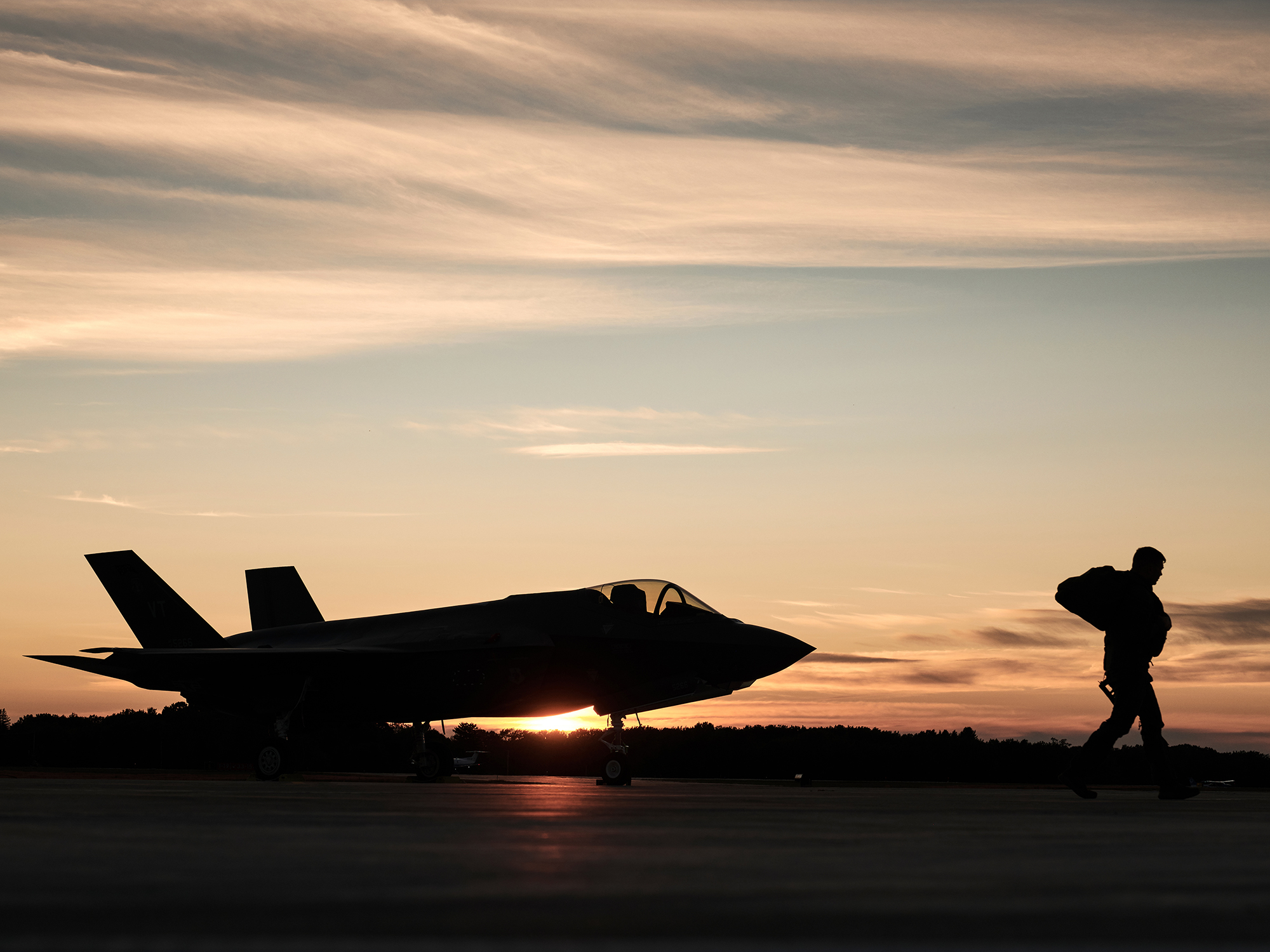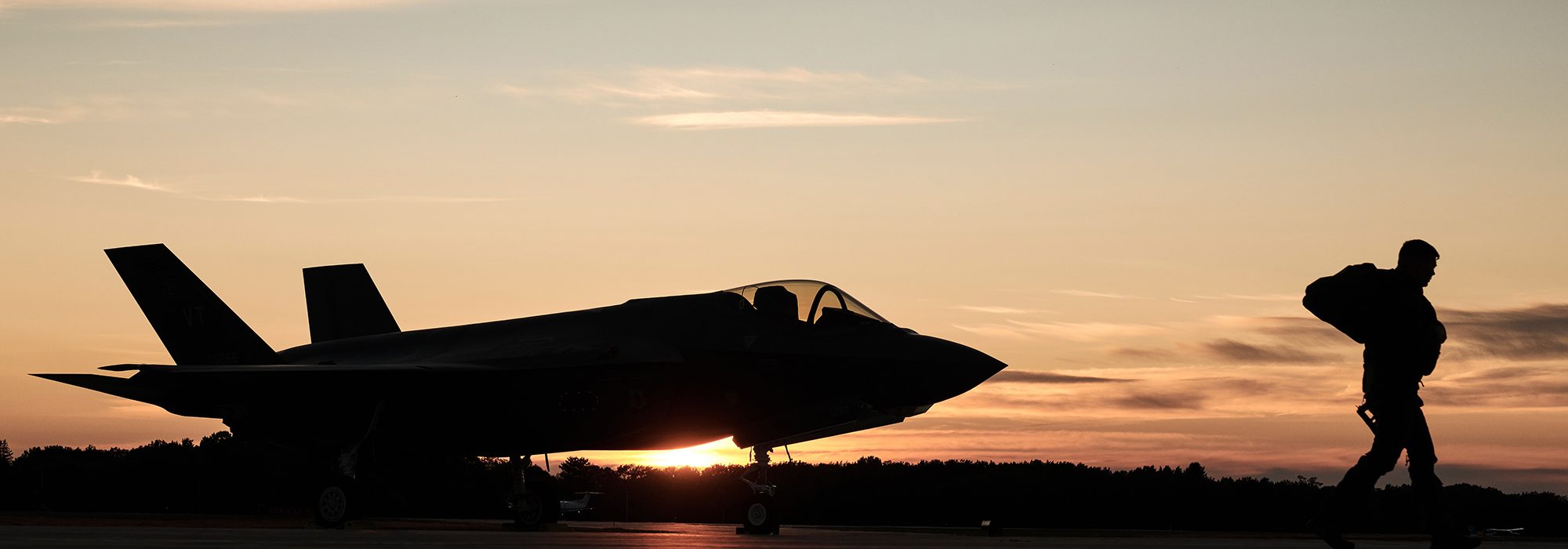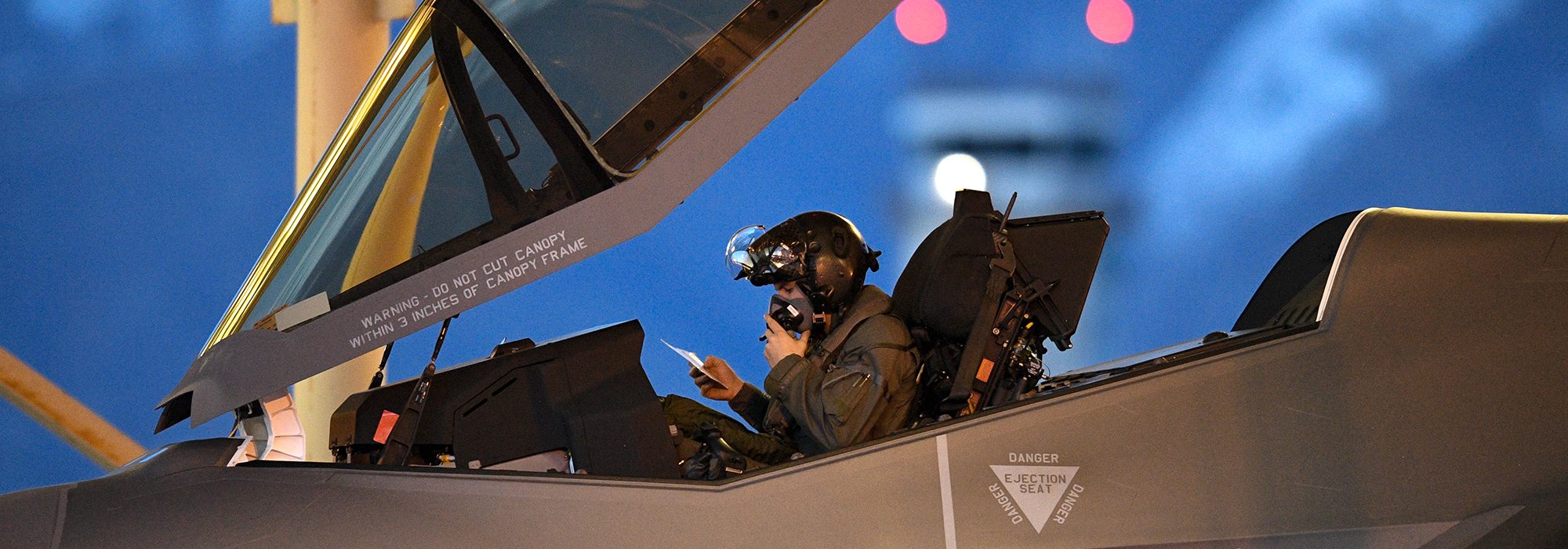The Air Force seems to be sticking with its long-term strategy for the F-35, even as it prepares to put down big bets on the Digital Century Series of new aircraft in the Next-Generation Air Dominance program. The NGAD aircraft—intended to be rapidly designed, fielded, upgraded, and even retired to keep up with the technological threat—appear, for now, to be additive to USAF’s plans for both the F-35 and F-15EX.
Service acquisition chief Will Roper says he thinks the Digital Century Series could yield an NGAD platform—which may or may not look like a fighter—in as little as five years. Service and Pentagon leaders are declining to discuss whether that puts the F-35 and NGAD in conflict.
Air Force leaders have said consistently in recent months that they’re not backing away from building 1,763 F-35As, the original objective. At the planned rate of purchase, though, the last F-35A wouldn’t be delivered to the Air Force until 2040. A lot can change between now and then.
“What we can’t afford to do,” said USAF’s Undersecretary Matthew P. Donovan, is “get into multidecade programs.” That’s what the F-22 and F-35 became. The original prototype YF-22 first flew in 1990; the production version flew first in 1997. Initial operational capability was not declared until 2005. Likewise, even though Lockheed Martin has now delivered more than 400 F-35s, “it still hasn’t met full-rate production and still hasn’t finished [Initial Operational Test and Evaluation],” Donovan said. That makes it “about a 20-year development program,” he noted.
Donovan declined to say whether success with the Digital Century Series would lead to curtailing production of the F-35—or of the F-15EX, which was inserted into the Air Force’s fighter plans a year ago at the suggestion of the Pentagon’s Cost Assessment and Program Analysis shop.
Pentagon acquisition and sustainment chief Ellen M. Lord acknowledged in October that Roper’s approach is ”very innovative and interesting,” but added that the different programs are complementary, not competitive. “We look at the total capability here versus the adversary, and we find a place for the F-35, the F-15, and the new Century Series,” she said. Asked specifically if a rethink of the Air Force’s F-35 goal of 1,763 aircraft is coming, she said, simply, “no.”
Still unclear is how many F-15EXs the Air Force wants. Donovan said no final buy objective has been set, though the service has talked about as many as 188 aircraft. A continuing resolution on the fiscal 2020 defense budget stuck the F-15EX in limbo, because CRs don’t allow for new starts. Congress limited the F-15EX to two examples until USAF comes up with an acquisition plan, something it can’t do while the CR is in force. Donovan said the service can’t compute a unit cost for the aircraft without moving the program forward.
The Air Force requested $1 billion for NGAD in the fiscal 2020 budget; going into conference, the Senate was willing to approve that amount, but the House had cut it in half.
The Digital Century Series, if it works, “gives us some options” later on, Donovan said, but, for now, USAF is not cutting back on the F-35 buy.
Service leaders have said privately for years that they deliberately avoid talking about potential smaller F-35 buys because any reduction instantly increases the unit cost of the jet, as there would then be fewer aircraft across which to spread development costs. “We learned our lesson with the B-2 and F-22,” said one. A spike in unit costs inevitably leads to a reduction in the production run, spurring still greater unit cost increases and putting the program into “a death spiral.”
The Air Force has not aggressively increased its per-year buy of the F-35, once forecast to be 110 aircraft a year by now, but still fewer than 60 in actual budgets. Service leaders have indicated they prefer to wait to buy the Block 4 version as the bulk of the fleet, whereas the Block 3F is the version now coming off the assembly line. The Block 4 jets will have improved electronic warfare, sensing, weapons and networking capability, and all indications are that they will be more maintainable and less costly to operate than earlier versions, many of which are being retrofitted to the current configuration.


Under $80 Million
The big F-35 news in October was the announcement of a firm contract between the Pentagon, its international partners, and Lockheed Martin for Lot 12-14 production of the fighter. Under the $34 billion deal, the unit cost of the F-35 will for the first time be less than $80 million a copy, starting in Lot 13. That’s “one lot earlier than planned; a significant milestone for the department,” Lord said at a Pentagon press conference. The contract actually beats the $80 million goal that Lockheed Martin and the Joint Program Office pledged to several years ago; by Lot 14, the unit price of the F-35A used by the Air Force will be $77.9 million in then-year figures and is expected to go lower still.
The contract covered 478 aircraft (not including long-lead funding provided in earlier contracts), and includes 149 jets in Lot 12, 160 in Lot 13, and 169 in Lot 14. Maximum production of about 180 per year would be achieved in Lot 15 or 16.
“The most dramatic rate increases are now behind us,” said Lt. Gen. Eric T. Fick, program executive officer for the F-35. “Lot 12, at 149 aircraft, represents only a 6 percent increase over Lot 11’s quantity of 141, and the deltas for Lot 14 ands Lot 13 are similar.” Lot 11 production “was a full 50 percent higher than Lot 10, which was itself 65 percent greater than Lot 9.” Smaller volume increases should take some pressure off the supply chain, he said, which has struggled to keep up with demand at times, cramping aircraft availability. One problem was that vendors had to build unique parts for several blocks of aircraft, while chokepoints at the depot level also kept airplanes out of circulation.
The Lot 12-14 contract includes a so-called “block buy” for allied nations, locking in lower prices for raw materials and parts bought in greater bulk.
The US can’t participate in the block buy yet, however, because US law prohibits multiyear contracts until weapon systems are in full-rate production. Lord announced earlier, in October, that full-rate production won’t be achieved by the end of calendar 2019 as planned.
Still, “we exceeded the total aircraft quantity we delivered” in 2019 compared to 2018, “and we have a 96 percent on-time delivery rate, a tremendous improvement from where we were last year, with an average on-time delivery rate of 64 percent,” Lord said.
She also quoted a “combat-coded operational unit mission capability performance” increase “from 55 percent in October 2018 to 73 percent in September 2019.” That was an average of poorer-performing early jets and better-performing newer™ examples, and a narrowly missed a goal of 80 percent mission capable set by former Defense Secretary Jim Mattis last year.
Graduation Deferred
In order to get to full rate, the F-35 must first graduate from Initial Operational Test and Evaluation, a roughly yearlong assessment of the jet in various scenarios against a variety of threats and environments. Lord said IOT&E is going well, and the Pentagon is satisfied with the way the F-35 is performing.
“The Department has full confidence in the planes that are flying today,” she said. “The Air Force and the Marine Corps have both deployed squadrons and are very, very happy with the capability.” The IOT&E apparatus has “completed 90 percent of the testing,” she reported, and “we are very confident in the configuration of the aircraft, and we are just working on the nuances of working against these advanced threats.”
However, she has decided to wait to certify the F-35 fully compliant with requirements until it is integrated into a Pentagon virtual wargaming system called the Joint Simulation Environment. The JSE assesses how many of various weapon systems are needed to prevail in various conflict scenarios.
“The criteria in terms of getting out of IOT&E is to test against threats that we will see 10 years from now,” she explained. “We can only do that in a synthetic environment.”
Fick explained that “we’re taking a digital representation of the aircraft … integrating it into a synthetic representation of the threat space, to include ground threats, air threats, both blue and red weapons, environmental effects, all of those things … and integrating them together so that the systems talk to one another digitally. And that’s just a very, very large task to get done.”
Although neither Lord nor Fick explained why the issue didn’t erupt until late IOT&E, Fick noted that there were “some disagreements with Lockheed Martin on how to proceed.” In the early days of the F-35, “there was no JSE. There was VSim, which was a Lockheed Martin proprietary environment.” Some years back, he said, “we elected to pull that work out of that proprietary environment and put it into a US-government-owned facility in the JSE that will allow us to integrate other aircraft, perhaps other manufacturers, and do that system-of-systems work.” The system allows for “more … pieces; … the fights get more complex, and then you find more things relative to the interactions of all those systems.”
Because of the disagreement, “we struggled to get out of those gates,” Fick said, but “the relationship with Lockheed … is very much better now. We’re working side by side with teams of embedded Lockheed coders and engineers … with the NAVAIR (Naval Air Systems Command) folks at Pax River, doing that integration. And I think they’re making decent progress.”
Lord said she anticipated declaring IOT&E complete and the F-35 entering full-rate production perhaps 13 months late, which could mean as late as January 2021.
“This does not change what we’re doing on the production line, what we’re doing in terms of development or sustainment” Lord said of the JSE issue.
“While we are making progress, we are not where we need to be,” she asserted. “We have industry’s commitment on accelerating improvements in sustainment. Our focus is on improved F-35 fleet readiness and driving toward the service affordability goals.”
The completion of IOT&E will be the next major milestone for the F-35; after that, the big benchmark will be deciding if the NGAD is good enough to forego further production of the Lightning II or the F-15EX.
